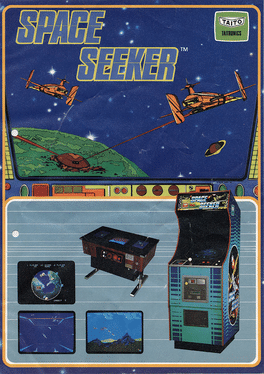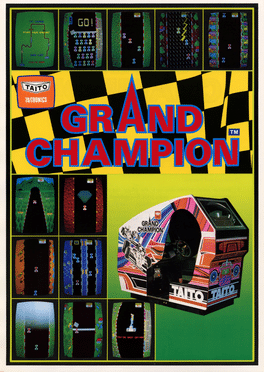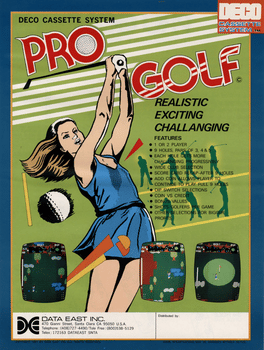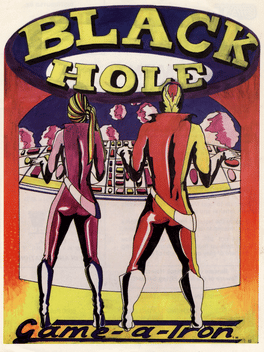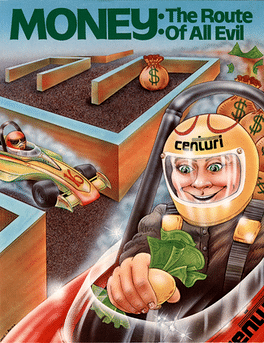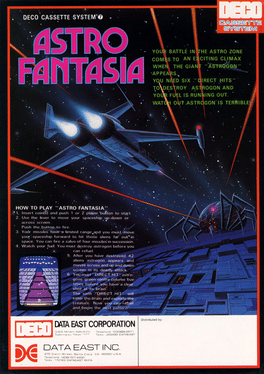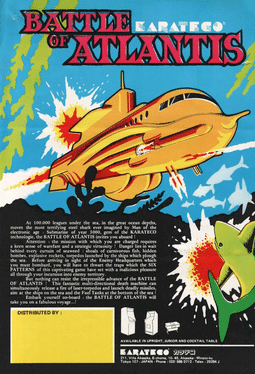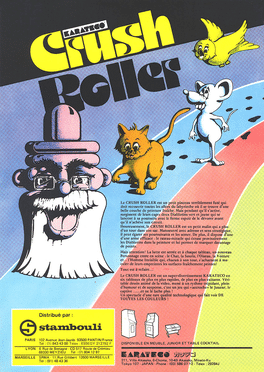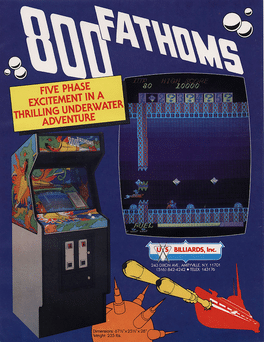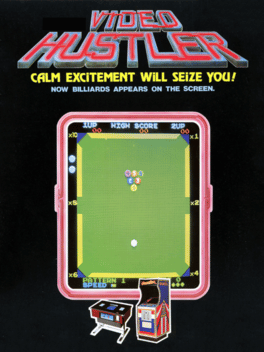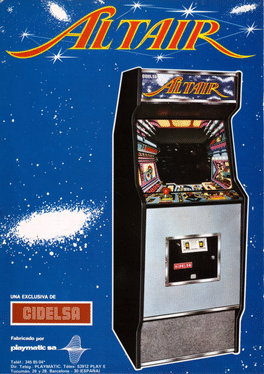New Arcade Games - Page 127
-
War of the Bugs
1981
War of the Bugs
1981
The game is much like playing Centipede in a Galaxian-type environment. Interestingly enough, if you move, the shot moves as well. -
Spiders
1981
-
Space Seeker
1981
-
Moon War
1981
-
Rock Climber
1981
-
Red Alert
1981
-
The Hand
1981
The Hand
1981
A maze game like Pac-man. You are a 'Hand' and so are your enemies. Each hand can be Rock (A fist), Paper (Flat) or Scissors (2 fingers extended). Your job is to clear a maze of dots to move to the next level. If you touch an enemy and your 'hand' beats his, you win, otherwise you lose your current turn. -
Grand Champion
1981
-
Demoneye-X
1981
-
Tournament Pro Golf
1981
-
Black Hole
1981
Black Hole
1981
A space-themed shoot'em up. The point of the game is to shoot all of the terrain, go through the "point ships" for extra points, and finally shoot the moving figure on top of everything. -
Pleiads
1981
Pleiads
1981
Pleiads is a multi-stage space shoot 'em up in which enemy ships fly at the player in waves in a similar fashion to games like Galaxian and Phoenix. Ships emerge from a mothership at the top of the screen and swoop downwards in a series of patterns which players must anticipate as they shoot the ships and avoid being obliterated by the Martian onslaught. There are four stages in the game. In the first stage the Earth space ship must defend the space station from Martian invaders who have the ability to transform from flying invaders, to walking invaders who build walls across the Earth city; these barriers must be destroyed. At the end of stage one the Earth space ship flies to the top of the screen to prepare to meet stage two. In the second stage the player encounters eight space monsters who must be hit directly on center to be destroyed before moving onto stage three. In this stage invaders emerge form a space ship at the top of the screen and swoop down on the player in sweeping attacks. In the final wave the -
Korosuke Roller
1981
Korosuke Roller
1981
Time to take up your paint brush and paint the town Red (or Green or Orange, or whatever color you happen to have on hand)! A pair of fish are out to stop you but you can roll over them at the overpass. There's other items that just try to mess up your paint job; you can run over these folks easily (if you catch them). -
Route-16
1981
-
Astro Fantasia
1981
Astro Fantasia
1981
This is a "Galaga" style vertical shoot'em up with a few unique twists that make it interesting. You pilot a single fighter ship against an armada of enemies (sound familiar?). There are 2 different play screens that alternate. -
Battle of Atlantis
1981
Battle of Atlantis
1981
Battle of Atlantis is a scrolling shooter arcade game released by Game World Manufacturing / Comsoft in 1981, similar to "Scramble". It was designed and programmed by Andy Thomason. The mission of the game is to finish the six tables (levels) by shooting enemies. Through all six tables, build up your bonus by blowing-up the fuel tanks. Table 1 : Avoid and destroy the floating mines. Table 2 : Exploding sharks appear as well as the destroyers. Table 3 : A cavern where octopuses lie in wait. Table 4 : A complex of towers replaces the lower part of the cavern. As well as the destroyers and octopuses, the mines reappear in large numbers. Table 5 : Accelerated version of Table 4. Table 6 : You return to Table 1 in an accelerated version. -
Crush Roller
1981
Crush Roller
1981
Make Trax, known in Japan as Crush Roller (クラッシュローラー Kurasshu Rōrā?) is a 1981 arcade game originally developed by Alpha Denshi and published by Kural Samno in Japan. It was later licensed for North American release to Williams, and in Europe to Karateco and Exidy. -
800 Fathoms
1981
800 Fathoms
1981
The player has to guide a submarine armed with torpedoes and missiles through five levels while fighting different underwater terrors. The game play is easy during the first five areas but it gets really tough at the later levels where the underwater landscape "grows" and there is not much space left for maneuvering the submarine. At the end of each area the boss-submarine appears and its firepower is not easy to overcome. US Billiards, the 800 Fathoms maker, released 10 different machines in our database under this trade name, starting in 1973. Other machines made by US Billiards during the time period 800 Fathoms was produced include Ab$cam, Variety, US Billiards, Video Pool, Survival, and Shark. -
Video Hustler
1981
-
Altair
1981
Altair
1981
Altair is one of the first commercial Spanish games. Taking elements from Phoenix and Moon Cresta, the player controls a ship that can move across the screen, destroying enemy ships. The game is divided into stages and has one of the first final bosses in the history of shoot 'em ups.


